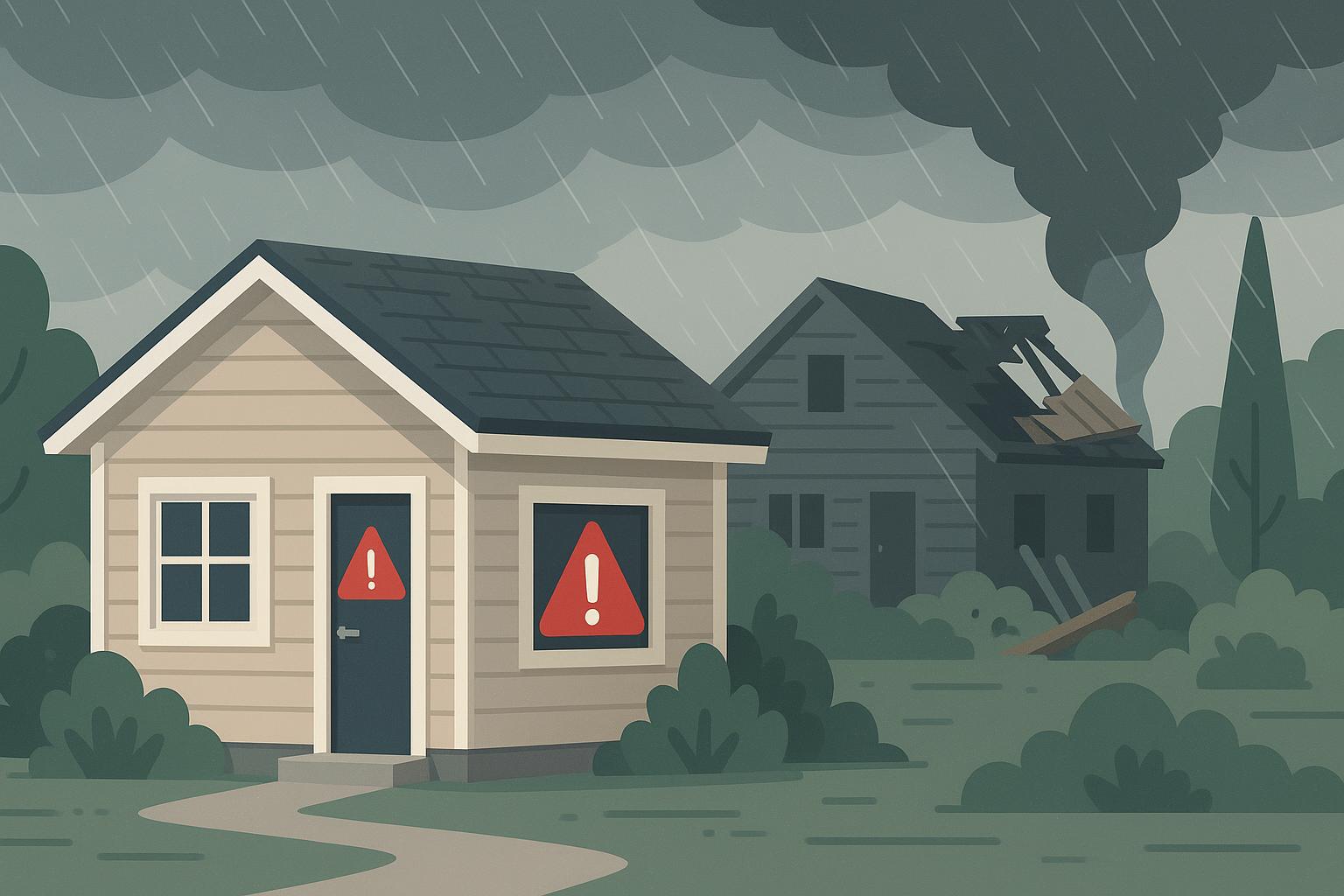
Building an Emergency Shelter: How Canadian ADUs Enhance Disaster Preparedness
Estimated reading time: 8 minutes
Key Takeaways
- Emergency Safety: Canadian ADUs offer a secure, self-contained refuge during disasters.
- Resilient Design: Incorporating robust building codes and backup systems ensures lasting protection.
- Disaster Preparedness: Stocking provisions and planning for extreme weather are essential for reliable emergency shelters.
- Regulatory Compliance: Adhering to national and local building standards is critical for safety and functionality.
Table of contents
- Introduction: Emergency Shelter, Disaster Preparedness, and Canadian ADUs
- Understanding Emergency Shelters in the Context of Canadian ADUs
- Key Elements of Disaster Preparedness for ADUs
- Incorporating Resilient Design into ADU Emergency Shelters
- Essential Backup Systems for Reliable Emergency Shelters
- Practical Tips for Canadian Homeowners
- Conclusion: The Value of Canadian ADUs as Emergency Shelters
- Frequently Asked Questions
Emergency Shelter is defined as a secure, temporary refuge providing food, water, warmth, and safety during natural disasters and emergencies. In Canada, these shelters serve as lifelines when homes are threatened by floods, wildfires, winter storms, or other crises. For further details on operational guidelines, visit Public Safety Canada and City of Hamilton – Shelter Standards 2025.
Disaster preparedness is more urgent than ever. With climate change intensifying extreme weather, planning ahead and creating safe fallback spaces is essential. Canadian ADUs (Accessory Dwelling Units) offer secondary living spaces—like backyard suites or garage apartments—that can be transformed into emergency shelters. For more on ADU benefits and design strategies, explore the provided guide.
Understanding Emergency Shelters in the Context of Canadian ADUs
Emergency Shelter Defined: Immediate Safety in Times of Crisis
- An emergency shelter is designed to offer immediate safety, food, water, and warmth when dangers arise. It provides not only physical protection but also essential support ([Public Safety Canada], [Canada Infrastructure and Communities], [Hamilton Emergency Shelter Standards 2025]).
Why Canadian ADUs Make Ideal Emergency Shelters
- Self-Contained Refuge: Independent kitchens and bathrooms provide privacy and isolation when necessary.
- Increased Housing Supply: Boosts available housing during crises, reducing strain on communal shelters.
- Flexible Shelter Options: Can accommodate family, friends, or neighbours while ensuring better hygiene and quarantine capabilities.
Building Codes and ADU Regulations in Canada
- National Building Code: ADUs must comply with safety, fire protection, and accessibility standards as set out in the National Building Code of Canada.
- Local Bylaws: Municipal guidelines may include requirements for floor space, emergency exits, and ventilation. Consultation of local rules is essential. For a comprehensive overview, refer to Canadian ADU Regulations: A Comprehensive Provincial Guide.
- Compliance Is Critical: Proper permits and adherence to codes protect occupants and reduce liability ([Public Safety Canada], [Toronto Shelter Standards], [Hamilton ES Standards]).
Key Elements of Disaster Preparedness for ADUs
Disaster Preparedness: Essential Provisions and Canadian Scenarios
Every ADU destined to be an emergency shelter must be equipped for Canada’s unique challenges. Consider the following checklist for core disaster readiness:
- Water Supply: Maintain 2 to 4 litres per person per day for at least 72 hours using sealed containers or dedicated tanks.
- Non-Perishable Food: Stock high-calorie, easy-to-prepare items such as canned goods and energy bars.
- First Aid Kits: Ensure kits are updated with essential supplies, medications, and instructions.
- Communication Tools: Keep battery-operated or crank radios, power banks, and a list of emergency contacts on hand.
Canadian-Specific Risk Scenarios:
- Flooding: Plan for waterproof food storage and install sump pumps.
- Wildfires: Enhance air quality with HEPA filters and maintain a supply of N95 masks. Learn more from Tiny Home Air Quality: Protect Your Space from Forest Fire Smoke in Canada.
- Severe Winter and Ice Storms: Secure emergency heating, thick blankets, and non-electric lighting.
- Extended Power Outages: Use battery backups and multiple lighting solutions.
Tips: Clearly label all supply locations and maintain both digital and paper-based inventory lists. For comprehensive guidance, see Public Safety Canada – Emergency Planning.
Incorporating Resilient Design into ADU Emergency Shelters
Resilient design focuses on creating buildings that withstand disasters and recover swiftly. For Canadian ADUs, this means integrating multiple layers of protection.
Core Strategies for Resilient Design
- Structural Integrity: Reinforce the ADU’s framework and roof to stand up to heavy snow, wind, and debris. For guidance, check the Canadian Snow Load Requirements.
- Fire Resistance: Use non-combustible materials (metal roofing, concrete siding), fire-resistant insulation, and ember-resistant vents.
- Flood-Proofing: Elevate the ADU, apply waterproof sealants, and install sump pumps along with backwater valves. More details can be found at Flood-Ready Design.
- Energy Efficiency and Accessibility: Incorporate triple-glazed, low-E windows, wide doorways, entry ramps, and clear escape routes. See Designing Accessible Tiny Homes: Comprehensive Guide for more insights.
- Smart Design Features: Integrate solar panels, battery storage, and compact water purification systems. Learn about these options at Tiny Sustainable Living: Eco-Friendly Homes.
Long-Term Resilience
These design practices ensure the ADU remains functional for extended periods during and after a disaster, reducing repair costs and reliance on backup resources.
Essential Backup Systems for Reliable Emergency Shelters
Backup Systems: Power, Water, Heating, and Communications
- Power Backup:
- Portable Generators: Options include gasoline, propane, or solar-powered models.
- Installed Solar Arrays: Roof-mounted solar panels with battery storage provide a renewable solution. Refer to Solar-Powered ADUs for Canadian Homes.
- Automatic Transfer Switches: Enable seamless switching between grid and backup power during outages.
- Water Backup:
- On-Site Tanks: Barrels or bladders (80–200 litres) equipped with food-grade hoses and taps.
- Emergency Filtration: Use gravity-fed ceramic or manual pump filters to ensure safe drinking water.
- Heating Backup:
- Off-Grid Solutions: Options include wood stoves, portable propane heaters, or chemical heat packs. Always ensure carbon monoxide detectors are in place and ventilation is adequate.
- Communication Backup:
- Redundancy: Stock battery and hand-crank radios along with satellite communicators for areas with limited cell reception.
- Charging Solutions: Use power banks and USB charging stations powered by generators or solar batteries.
Best Practices: Routinely test backup equipment (every 6-12 months), maintain redundancy, and provide clear operating instructions with each system. For further details, visit Public Safety Canada.
Practical Tips for Canadian Homeowners: Designing Your Emergency Shelter ADU
From Planning to Operation: Transform your ADU into a reliable emergency shelter with these actionable steps:
1. Hazard Analysis and Code Compliance
- Identify regional risks such as flooding or wildfires.
- Review and meet municipal and provincial building standards. For guidelines, see Toronto Shelter Standards and Hamilton ES Standards.
2. Resilient Design and Backup System Planning
- Select fire-resistant, waterproof, durable materials.
- Integrate backup systems (generators, water tanks) early in the design stage for efficiency.
3. Stocking Emergency Provisions
- Create a comprehensive checklist for food, water, first aid, medications, and communication tools.
- Include comfort items such as blankets, flashlights, batteries, and sanitation supplies.
4. Training and Familiarization
- Walk family members or occupants through shelter layouts, exit routes, and backup operations.
- Perform regular shelter-in-place and evacuation drills.
5. Regular Maintenance and Readiness Checks
- Conduct biannual reviews of food dates, water rotation, and equipment functionality.
- Update supply lists and monitor local disaster preparedness recommendations.
Helpful Canadian Resources: Refer to Toronto Shelter Standards and Hamilton Emergency Shelter Standards 2025 for further information.
Conclusion: The Value of Canadian ADUs as Emergency Shelters
Converting or designing your ADU as an emergency shelter offers multiple benefits:
- Provides immediate, self-contained safety in disaster scenarios.
- Resilient design minimizes repair costs and reduces dependency on grid utilities.
- Redundant backup systems ensure continuous access to power, water, and heat when needed.
- Comprehensive disaster preparedness helps protect your family, property, and community.
Take action now by planning, retrofitting, or upgrading your ADU and developing a household emergency readiness plan. The safety and comfort of your loved ones may depend on your preparedness.
Frequently Asked Questions
Q1: What is an emergency shelter?
A: An emergency shelter is a temporary, safe refuge offering food, water, and warmth during hazardous events. It is designed to protect and support individuals during disasters.
Q2: How can Canadian ADUs serve as effective emergency shelters?
A: Canadian ADUs are self-contained units with independent utilities and flexible designs. They comply with building codes and can be quickly adapted for emergency use during events like floods, wildfires, or winter storms.
Q3: What backup systems are essential for an emergency shelter ADU?
A: Key backup systems include power solutions (portable generators, solar arrays), water storage and filtration, off-grid heating options, and redundant communication devices to ensure continuous operation during outages.
Q4: How important is regulatory compliance in converting an ADU to an emergency shelter?
A: Regulatory compliance is critical. Meeting both national and local building standards ensures the shelter is safe, reliable, and legally compliant, thereby protecting occupants and minimizing liability.

Leave a Reply